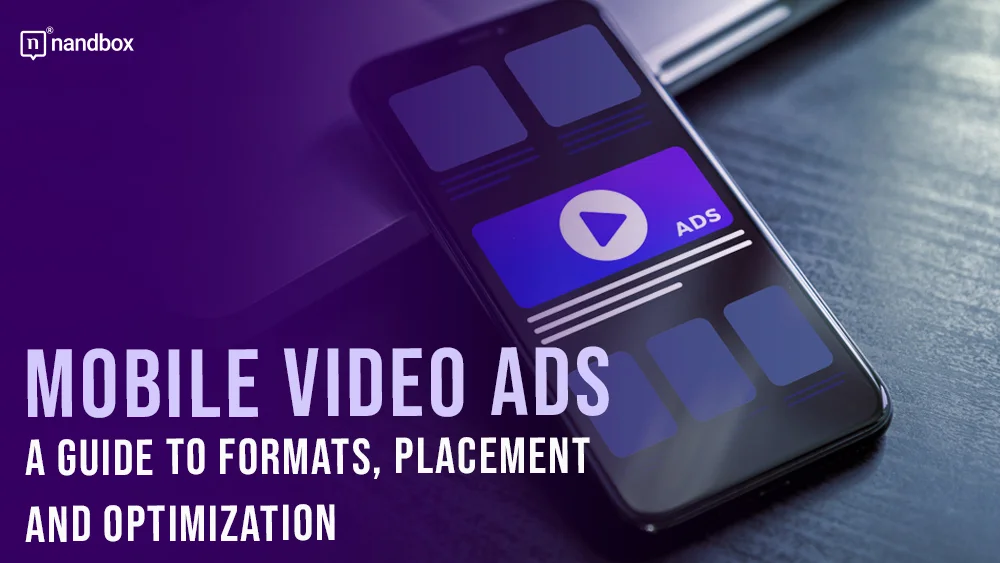Mobile Video Ads: A Guide to Formats, Placement, and Optimization
Today, people prefer to watch online videos on various gadgets. It has become possible to do so without using linear television. Smart TVs, mobile phones, tablets, and consoles—all these devices support video viewing, which contributes to the tremendous growth of video advertising. So, what mobile video ads formats should you choose for your campaigns? And how can you optimize the ad experience to make efficiency metrics skyrocket? Let’s try to figure it out.
Different Types of Video Ads to Look For
Mobile advertising has long surpassed the boundaries of simple web push notifications. Now, users consume increasingly diverse content on their mobile phones. They read blog articles, follow social media posts, watch videos, and download apps. If you plan to advertise with mobile video ads, for starters, you need to remember that there are two environments in which ads can be served—mobile web and in-app.
The mechanics of mobile web placements are essentially the same as those on desktops since ads are placed in mobile browsers. Meanwhile, the in-app environment prompts that ads will be placed mostly inside applications. A simple static banner is probably the most widespread format you’ve encountered so far. So let’s review some of the most popular alternative options advertisers use these days.
In-Stream and Out-Stream Videos
Out-stream video advertising is a format where ads are placed on a website or within a publisher’s mobile application outside the video player and video content. This type of video ad starts automatically in a muted mode. Users have the option to enable sound and, if desired, rewind the video to watch it from the beginning.
In-stream advertising is very similar to TV commercials, where ad commercials are played within the video player during content playback. In contrast to the out-stream format, a website must have an embedded player to display such ads. That’s why, most frequently, this ad type can be spotted on YouTube, Facebook, and other popular platforms.
Rewarded
Rewarded ads are the most popular option in mobile games. This ad offers the viewer some kind of reward after watching the ad. Thanks to this, the rewarded video ad has great completion rates. The reward depends on the application. For example, there can be additional points in the game, getting access to useful in-app items, free hours of closed content browsing, customization options, and more. At the same time, the ad unit has the option to close the ad, so the ad doesn’t appear too annoying.
Playable
Playable ads can be a part of the advertising strategy directed toward the promotion of a new mobile game. Normally, the playable ad is placed in another popular mobile game at logical pauses, e.g., between game-level transitions and more. The ad itself is a video that allows the user to try out the gameplay of the newly advertised app. This way, the user gets familiar with the game. He can only, after this, decide whether it’s worth downloading the full version. Thus, it guarantees that the app developer gains relevant and loyal audiences who install the game consciously.
Vertical video ads
People often access social media platforms from their smartphones, and it’s quite natural that they hold their devices vertically while doing so. That’s why a large portion of the content is oriented toward the vertical format. This is the reason why vertical video ads are trending.
This format is used on social media platforms like Instagram, TikTok, and Snapchat. What’s important is that these videos capture the attention of the creator’s followers and also new users on the platform thanks to their appearance in recommendation feeds.
Comparison of Formats and Best Examples From Brands
Now that we’ve familiarized ourselves with the core mobile video ads suitable for mobile experiences, it’s time to review and compare them in terms of different campaign objectives.
An example of a successfully implemented out-stream ad from the Neutrogena brand shows that these ads provide a seamless user experience and engagement as they are muted and don’t irritate users. Users can manage and control the ad as well. These ads are best applied for campaign objectives such as raising brand awareness and especially exposure (as outside players easily serve them).
In-stream video ads are not so flexible in terms of user experience as they interrupt video content consumption. At the same time, they work best to capture targeted audiences on popular video platforms like YouTube. Those ads are ideal for such objectives as driving clicks and website visits. A good example is the successfully implemented campaign by ABC News 4, as it fits perfectly in the context of the video content. Other examples include an in-stream video from the brand BX.
Rewarded video ads can be very effective for driving app installations, especially in the gaming niche. The engagement level is one of the highest among other formats. This is because sometimes users explicitly look for rewarded ads in the app to get some rewards easily. This applies not only to gaming apps, though. For example, Spotify organized a successful rewarded ad campaign by letting users receive 30 minutes of uninterrupted music in exchange for watching ads.
Playable ads are suitable only for in-app ad experiences; they are exceptionally engaging for advertising a new mobile game and driving installations among highly interested users. A good example of this ad was implemented by Zen Match, whose installations soared to 17 million after the ad was launched in 2022.
Factors Influencing the Performance of Mobile Video Ads
Creating advertising campaigns is an exciting process that doesn’t only boil down to designing a creative. You need some reference points You need some reference points, like using the best AI ad generator, to make informed decisions regarding ad format optimization and placement of ads. Overall, the ad should also align with the publisher’s content strategy. Let’s try to understand what needs to be considered before starting the development of mobile video advertising.
Video Length
Choosing the right placement for your video ad is crucial, even before you begin developing a creative. Different platforms have their own requirements for video format and content. For instance, a one-minute video about an app you’ve placed on Google Play may not be suitable for the App Store. As the video duration should not exceed 30 seconds.
Content Relevance
Ideally, the ad should be placed in thematically related content in order to be relevant to the user. This becomes achievable thanks to the ad platforms equipped with contextual targeting. Your video content may also be displayed to a user who is not currently in need of your product or service (or at least not aware of it) but who will likely purchase it in the future. This becomes possible thanks to the application of a programmatic ad platform that channels ads to the right audiences based on their digital characteristics (age range, geolocation, gender, and more). Before launching ads on such platforms, the advertiser needs to do audience segmentation and pinpoint who they want to target.
Ad Format Optimization
It’s important to monitor the performance of ads. An excessive number of impressions will have a counterproductive effect, causing user irritation. To avoid this, configure the dayparting on your platform. This defines how many times one user sees your ad throughout the day. Ad format and its resolutions can also be automatically optimized with settings on your ad platform that consequently adapt creative size to each type of screen or environment.
Call-to-action (CTA) Placement
Around 80% of all the new information we derive comes from visual signals. Visible ad elements help us form the most accurate, comprehensive, quick, and easy image of a product or service, associating it with specific thoughts and emotions. The attractiveness of the creative will determine how often it is noticed, but that alone is not enough. When launching a mobile video campaign, use a very enticing offer for customers and equip it with a clear call to action. Perhaps a 25% discount coupon? A free servicing coupon? Or a Starbucks gift card? Give your campaign the best chance of success with a clear CTA and a link that leads directly to the landing page or purchase button.
The Bottom Line
Thoughtfully crafted mobile advertising enables advertisers to promote their products and communicate efficiently with their target audience. It also enhances brand awareness and competitiveness. Start using effective ad formats in your media mix and incorporate the best practices of mobile video advertising that we’ve discussed today. They can help you reach unparalleled advertising outcomes, engagement, and customer loyalty.





